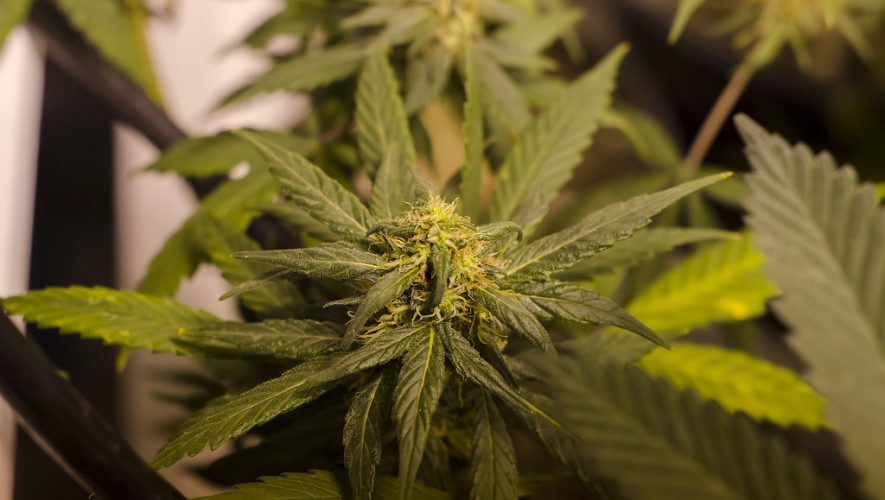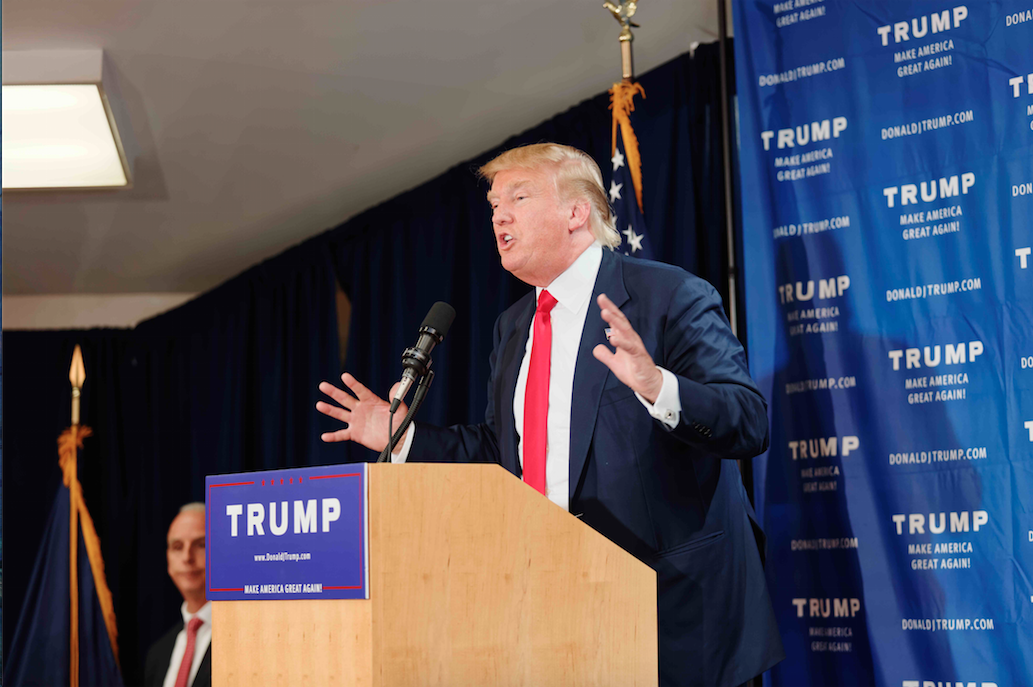At first glance, marijuana legalization doesn’t seem like it should be a priority for voters in the upcoming election, especially when compared to issues such as the lack of accessible health care, the climate crisis, and rising gun violence. However, the legalization of marijuana directly relates to criminal justice reform.
The War on Drugs—an initiative pioneered to eradicate illegal drug use in America—began in the 1970s and expanded the US prison population sevenfold by the early 2010s. Marijuana arrests skyrocketed during the mid-1990s—overtaking cocaine and heroin arrests—and remained high into the 2000s. African Americans and Latinos accounted for most of these arrests, despite marijuana use being proportional among whites and other racial minority groups.
Today, marijuana-related charges remain the most common drug offense; in 2017 alone, there were 659,700 marijuana arrests, 40.4 percent of the year’s total drug arrests. Drug enforcement remains racially biased as well. African Americans are four times more likely than whites to be arrested for marijuana possession. In Iowa, Minnesota, Illinois, and D.C., they are about eight times more likely.
These estimates are conservative, however, as the FBI’s Uniform Crime Reports does not categorize Latinos separately from whites, inflating their figures on “white” arrests. As a result, the racial disparity in marijuana arrests is likely worse than what is reported. To rectify the racial bias in marijuana enforcement and address its increasing prison population, the United States must legalize the production, sale, and use of cannabis.
Marijuana was criminalized to prevent Mexican immigration to the United States. After the Mexican Revolution in the early 1900s, there was an influx of Mexican immigration to border states. In the United States, people used marijuana—then known primarily as cannabis—commonly. The media used the term “marihuana” to spread xenophobic claims that Mexicans were using a disruptive substance and causing disorder. This caused most Americans to disassociate the cannabis in their medicine cabinets with the “marihuana” used by Mexican immigrants.
Cities and states criminalized marijuana as an excuse to target Mexican immigrants. For instance, El Paso, Texas criminalized cannabis to justify searching and deporting Mexican immigrants. As racist rhetoric persisted, marijuana criminalization grew. Eventually, marijuana was virtually banned by the Marihuana Tax Act of 1937, which restricted and heavily taxed marijuana production, levying a tax of about $1. Violations “could lead to up to five years’ imprisonment or a $2,000 fine (about $34,490 in today’s dollars).”
In Leary v. United States (1969), the Supreme Court ruled that the Marihuana Tax Act of 1937 unconstitutionally violated the Fifth Amendment right to not self-incriminate. This is because, under the law, a person could not purchase tax stamps without disclosing the quantity or location of their marijuana.
Congress replaced the Marihuana Tax Act with the Controlled Substances Act of 1970, which established the scheduling system and drug enforcement procedures. Marijuana was classified as a Schedule I drug because it was considered a highly addictive substance with no medical value. Cocaine and meth, on the other hand, were classified as Schedule II drugs, since they served a medical purpose. President Richard Nixon maintained that marijuana should be a Schedule I substance, even against the wishes of his advisors and the Shafer Commission—a group tasked with reporting on cannabis’ safety. The Shafer Commission’s report deemed that marijuana posed no danger to society and recommended that marijuana possession be decriminalized. Their advice was ignored.
Following the wave of strict drug enforcement policies, Congress passed The Anti-Drug Abuse Act in 1986, which established mandatory prison sentences for drug possession. Congress set mandatory minimums of five, ten, and twenty years, with strict guidelines on what quantity of each drug would trigger each minimum. A year later, the federal government modified the sentencing classifications to address habitual offenders; under the “three strikes” provision, a defendant would receive life imprisonment after three felony convictions. These policies limited judges’ sentencing flexibility by forcing a minimum punishment irrespective of a defendant’s special circumstances. As a result, America’s prison population exploded.
As a Schedule I drug, marijuana possession carries a severe punishment. If a defendant is caught with one hundred kilograms (220.46 pounds), they face a minimum of five years in prison. If caught with one thousand kilograms (2204.62 pounds), it increases to ten. If the person has a prior felony conviction, their mandatory minimum would increase further. This policy was implemented to address trafficking, but it targeted minor offenders rather than kingpins or middle-level dealers. This policy also failed to target violent offenders; 85 percent of convictions under the policy were for nonviolent offenses. Furthermore, in California, two years after three-strikes was implemented, there were twice as many people imprisoned for marijuana charges than murder, rape, and kidnapping combined.
Even those with less than one hundred kilograms can face harsh sentencing. A first offense for any amount possessed carries a misdemeanor charge with a maximum sentence of one year and a maximum fine of $1,000. A possession conviction can adversely affect employment opportunities, housing eligibility, student financial aid, and immigration status. A person’s third misdemeanor marijuana conviction can be upgraded to a felony, for which the defendant risks up to three years in prison—with a mandatory minimum of ninety days—and up to $5,000 in fines. They are also two strikes away from life in prison. These policies have ravaged minority communities throughout the United States. While rescheduling marijuana may provide some reprieve, minorities will still be disproportionately impacted until cannabis is removed from the scheduling system altogether.
However, the Drug Enforcement Administration (DEA) maintains there has not been sufficient evidence to support marijuana’s medicinal value. While some American studies show that marijuana has medical benefits for pain prevention, these studies have not been on the scale necessary to establish adequate safety protocols. This is because the DEA restricts the amount of marijuana that is legal to research; higher research quantities must be approved by the Department of Health and Human Services, the Food and Drug Administration (FDA), and the DEA. Other countries have researched marijuana longer and have more findings; yet, the DEA and FDA largely dismiss foreign studies.
Still, there have been some strides toward marijuana legalization, most notably the recent FDA approval of a marijuana-based drug for children with epilepsy that prevents seizures. Epidiolex is made of purified cannabidiol (CBD). Some CBD products, as a result, have been rescheduled from Schedule I to Schedule V, the lowest level of controlled substances. In June, the House of Representatives passed legislation to prevent the Department of Justice from interfering with state marijuana laws. For marijuana advocates, this is a major step in the right direction—even if this bill does not become law—as the House’s action illustrates “the growing power of the marijuana law reform.” Nevertheless, cannabis and most CBD products are persistently classified as addictive and useless substances.
Many of the 2020 presidential candidates acknowledge the need for legalization in their broader plans for criminal justice reform. Almost all presidential candidates support eliminating past convictions for marijuana-related crimes. Senators Elizabeth Warren, Bernie Sanders, and Michael Bennet, as well as Representative Tulsi Gabbard, have co-sponsored bills that would expunge past federal marijuana convictions, while most other candidates have stated their support for these ends. Of the Democratic candidates still in the running, Micheal Bloomberg and John Delaney are the only candidates who do not support federal legalization; instead, they believe that states should decide whether to legalize recreational and medical cannabis.
Sanders—as one of the first candidates to put forth a blueprint outlining marijuana legalization—vowed to legalize marijuana in his first one hundred days, establish an independent clemency board in the White House, and use the estimated 132 billion dollars in federal revenue to invest in the “communities hit hardest by the War on Drugs.” These funds would create grant programs, provide vocational education, and institute community development programs. Sanders also promised to allocate resources to encourage people to start marijuana businesses that function as cooperatives and nonprofits, to ensure that minority communities can enter the market and share the benefits.
Pete Buttigieg’s criminal justice reform plan differs, as he’s set concrete and ambitious goals for shrinking the prison population. He aims to reduce the federal and state prison population by 50 percent by legalizing marijuana, expunging past marijuana convictions, reducing sentences for drug offenses, and retroactively applying these policies. Buttigieg also plans to eliminate mandatory minimums. At the 2019 National Action Network Convention, Buttigieg stated: “As we work to end mandatory minimums . . . we must be intentional about fixing disparities that have strong and deeply unfair racial consequences.”
Senator Cory Booker—who exited the race in January—fought to do the same. In 2017, Booker was a trailblazer in marijuana legislation, proposing the Marijuana Justice Act to remove marijuana from the scheduling system altogether and use federal funds to invest in minority communities most impacted by the War on Drugs. His plan was unique and bold, as it would heavily incentivize states to legalize cannabis by threatening to pull federal funds from states that enforce drug laws disproportionately between races—a policy applicable to virtually every state.
GOP challenger and former Massachusetts governor Bill Weld supports Booker’s plan and hopes to reform the criminal justice system from “a system that seeks to punish to one which pursues rehabilitation.” Weld has supported marijuana legalization since 1992 and believes drug addiction must be addressed as a public health issue, not a status crime. Throughout his policy, Weld states the importance of allowing for marijuana research, citing the medical progress Israel has made from cannabis research. He also supports releasing 17,000 non-violent offenders convicted of marijuana possession.
Whether or not these legalization policies would effectively combat mass incarceration has yet to be seen. While Sanders has a promising response plan for mass incarceration, the high cost of his policy, alongside his failure to provide concrete figures on the policy’s impact, weakens the strength and feasibility of his proposal. Buttigieg’s policy of retroactive justice through releasing convicted prisoners would radically expand federal power, possibly creating a dangerous precedent. While Sanders publicly states that he will legalize cannabis through executive order, there is no suggestion of how to execute the remainder of his blueprint. Buttigieg also fails to suggest how he would execute his policies.
Booker’s plan is comprehensive and ambitious. It feels as if it came directly from the communities most impacted by mass incarceration, considering its details, such as removing barriers for those with criminal convictions to receive occupational licenses for jobs, like taxi drivers. Weld’s criminal justice policy mirrors Booker’s, even going so far as to feature the senator’s policy. What makes Weld unique is his call to action: he is asking for an overhaul in the way the federal government responds to drug use. But what could reform in American drug policy actually look like?
In 2001, Portugal became the first country in the world to decriminalize all drug use. In the 1990s, an estimated 1 percent of the Portuguese population used heroin, and Portugal was the HIV capital of the European Union. Portugal’s attempted drug crackdown was ineffective and resulted in half of the prison population incarcerated for drug-related reasons.
Since decriminalization, Portugal’s drug-induced death rate is one-fifteenth that of the United States and has fallen to five times below the European Union’s average. This is because people are less scared to seek help. Between 1998 and 2011 drug treatment increased by over 60 percent. Additionally, safe injection and drug consumption sites provide drug users help from trained staff when taking drugs, a proven method of saving lives. In Vancouver, there was a 35 percent reduction in fatal overdoses after the establishment of a safe injection site. Furthermore, in all seventy-eight European safe injection sites, there has never been a recorded death. Portugal started its first mobile safe consumption site in April 2019, with the hopes of getting “trained staff to meet people who use drugs ‘where they’re at.’”
While drug use is decriminalized in Portugal, dealers are still prosecuted. Anyone found with less than a ten-day supply is sent to a local commission where they meet with doctors, lawyers, and social workers and are shown their options—sometimes treatment-based and sometimes not. Those with higher quantities go to prison.
The most considerable difference between the Portugese and American drug crises is that the Portugese crisis cuts through socioeconomic factors, while the American crisis disproportionately impacts low-income, minority communities. Reform becomes a more pertinent issue when an entire population is experiencing the consequences.
Consequently, the Portuguese approach does precisely what Weld and other presidential candidates have supported: it treats drug addiction as a medical issue. The Portuguese drug policy is radical when compared to the plans proposed by 2020 candidates, but it’s an example of what future drug policy and criminal justice reform may look like, particularly if a candidate successfully legalizes marijuana federally.
The American War on Drugs is failing. People are dying, families are losing breadwinners, and prisons are filled with American citizens deprived of opportunity or condemned by circumstance. Criminal justice reform, which must include the legalization of marijuana—and potentially other drugs in the future—is the end that policymakers must pursue to maintain the most fundamental American right: freedom.



